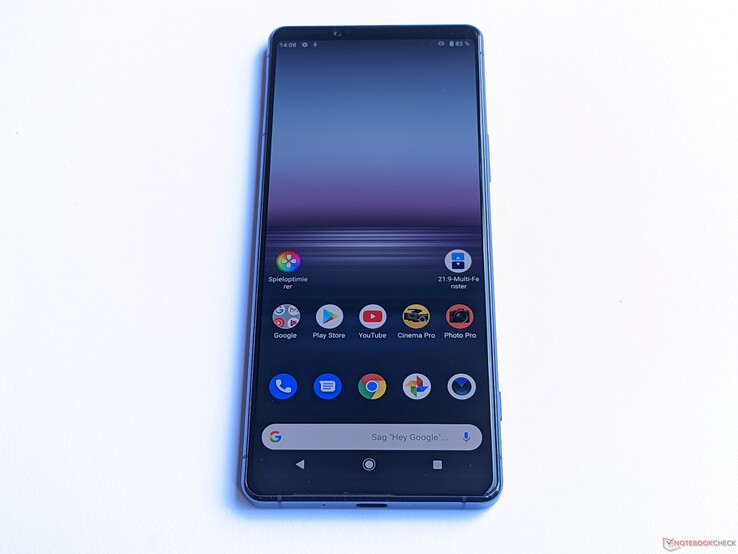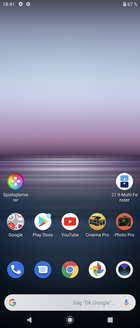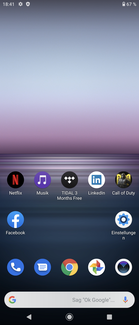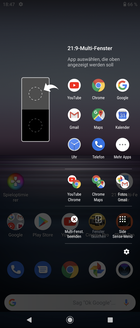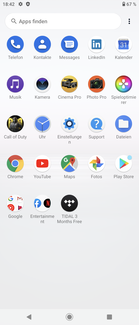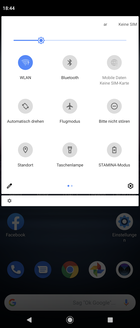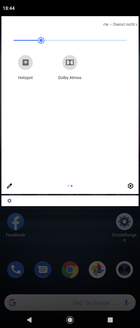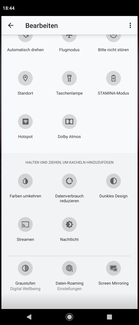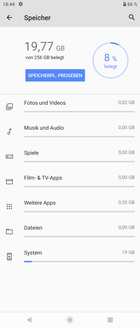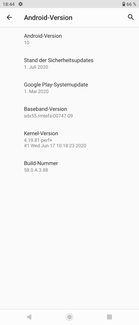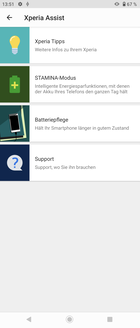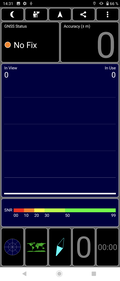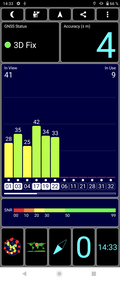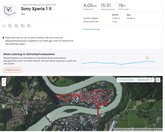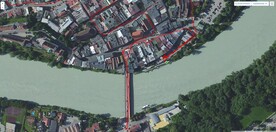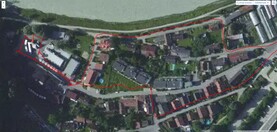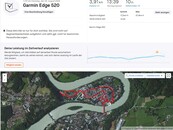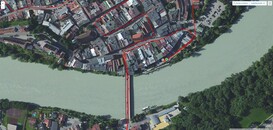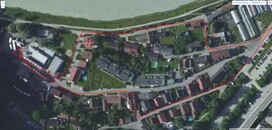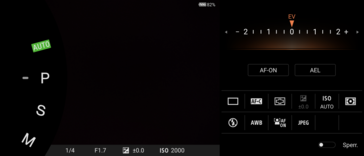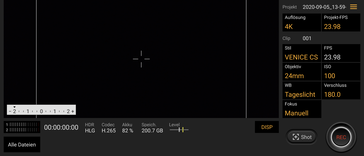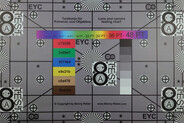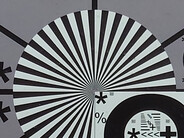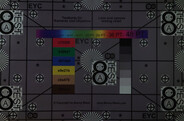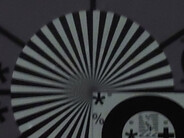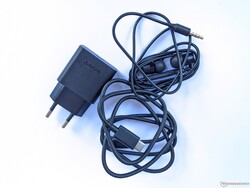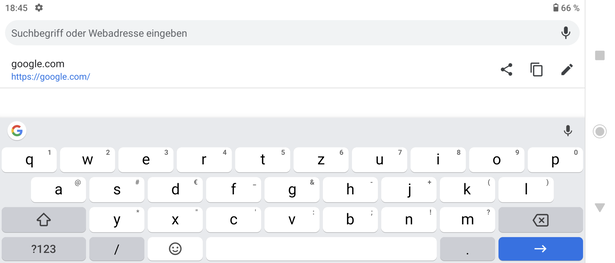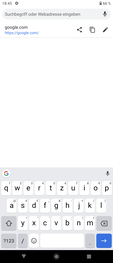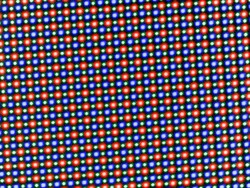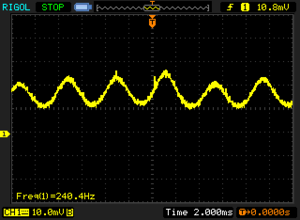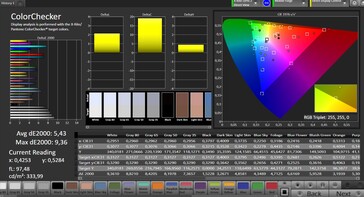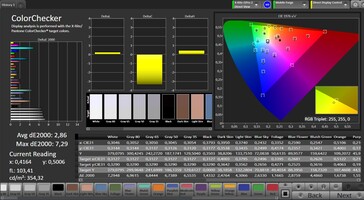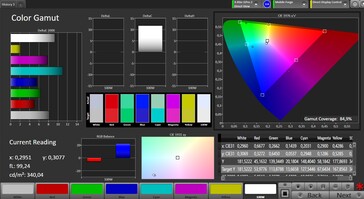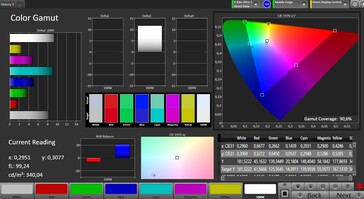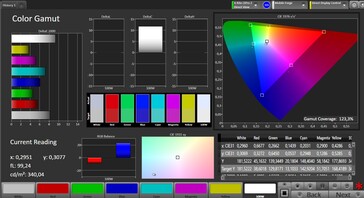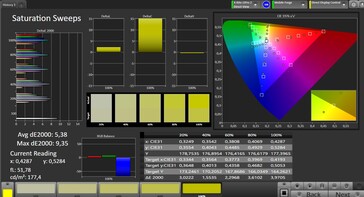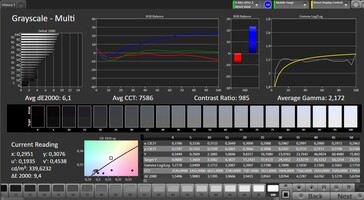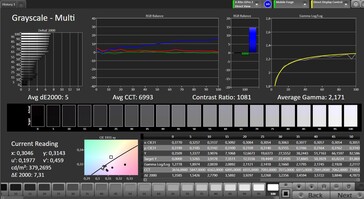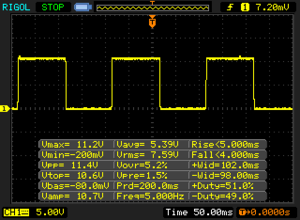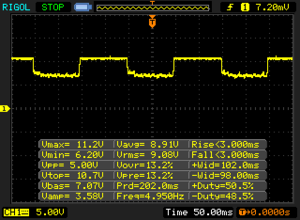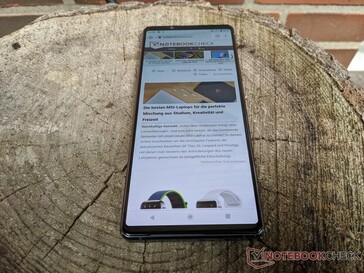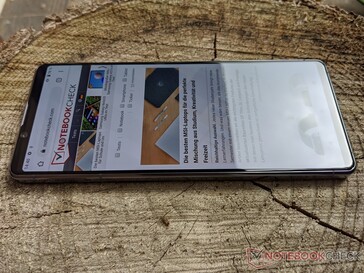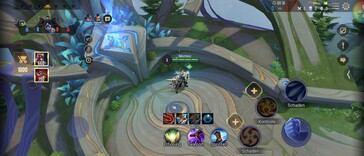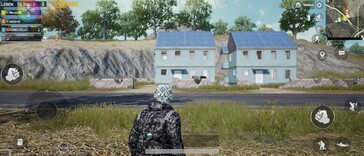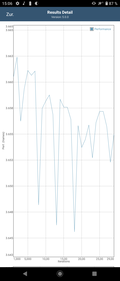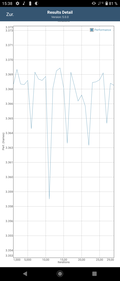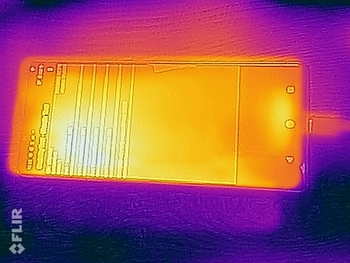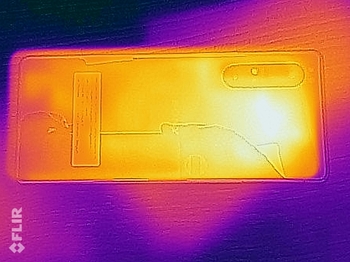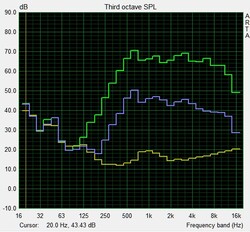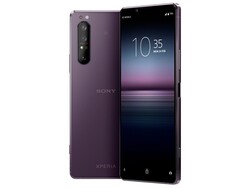Sony Xperia 1 II Smartphone Review: The Alpha-camera flagship
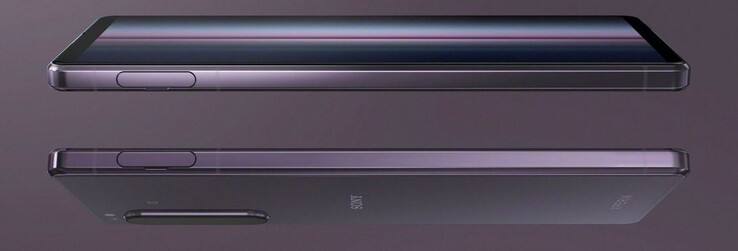
A year ago, we reviewed the Sony Xperia 1, which we found quite impressive. However, the 950-Euro (~$1124) Sony flagship had a few weaknesses, which should never crop up in a premium smartphone. The successor model Sony Xperia 1 II has a much heftier price tag of 1200 Euros (~$1420). However, it comes with professional camera applications.
The Xperia smartphone also comes with very impressive hardware. It features a Qualcomm Snapdragon 865, a Qualcomm Adreno 650, 8 GB of RAM and 256 GB of storage space. In this review, we are going to compare the Xperia 1 II with other similarly priced smartphones, which we selected from our expansive database.
Comparison Devices
Rating | Date | Model | Weight | Drive | Size | Resolution | Price |
|---|---|---|---|---|---|---|---|
| 85 % v7 (old) | 09 / 2020 | Sony Xperia 1 II SD 865, Adreno 650 | 181.4 g | 256 GB UFS 3.0 Flash | 6.50" | 3840x1644 | |
| 88.2 % v7 (old) | 04 / 2020 | Xiaomi Mi 10 Pro SD 865, Adreno 650 | 208 g | 256 GB UFS 3.0 Flash | 6.67" | 2340x1080 | |
| 88.5 % v7 (old) | 04 / 2020 | OnePlus 8 Pro SD 865, Adreno 650 | 199 g | 256 GB UFS 3.0 Flash | 6.78" | 3168x1440 | |
| 89.4 % v7 (old) | 04 / 2020 | Huawei P40 Pro Kirin 990 5G, Mali-G76 MP16 | 209 g | 256 GB UFS 3.0 Flash | 6.58" | 2640x1200 | |
| 89.6 % v7 (old) | 02 / 2021 | Samsung Galaxy Note20 Ultra Exynos 990, Mali-G77 MP11 | 208 g | 256 GB UFS 3.1 Flash | 6.90" | 3088x1440 | |
| 87.1 % v7 (old) | 09 / 2019 | Apple iPhone 11 Pro Max A13 Bionic, A13 Bionic GPU | 226 g | 64 GB SSD | 6.50" | 2688x1242 |
Case - Dust- and waterproof smartphone
Sony’s smartphone features an angular design. Thanks to Corning Gorilla Glass 6, the case is very rigid. Our review device also comes with an IP65/68 certification, meaning that it is both water and dust resistant. Despite a glossy back, the smartphone is far from being a fingerprint magnet. All in all, the device looks very stylish. Because of a tall 21:9 aspect ratio, the Xperia smartphone is very comfortable to hold in the hand. However, there are a few drawbacks with such a tall display, which become apparent when you try to swipe from the top to the bottom of the screen. The Sony smartphone comes in the following colour schemes: Purple
and Black
.
When compared to other competing devices, the low weight of the Xperia 1 II stands out. Weighing in at 181 grams (~6.4 oz), the Sony smartphone is considerably lighter than comparable devices.
Hardware Configuration - Sony Xperia 1 II with an LED indicator
Sony’s smartphone features a Qualcomm Snapdragon 865, a Qualcomm Adreno 650 GPU, 8 GB of RAM and 256 GB of internal memory. The storage capacity can be expanded by up to 1 TB by inserting a microSD card into the combined NanoSIM/microSD card slot. Our review device supports Wi-Fi calling and VoLTE. However, it does not offer eSIM functionality.
There is a 3.5-mm headphone jack on the top of the device. The USB Type-C port operates at USB 3.1 speeds. The Sony Xperia 1 II supports Widevine L1 DRM and all features of the Camera2 API. There is also an LED indicator.
Software - Android 10 with current security patches
Sony’s smartphone runs Android 10. The smartphone shipped with the security patches from July 1st, 2020. However, during our review, the security patch level was updated to 1 August, 2020. The Sony Xperia 1 II offers a mostly stock Android user experience with only a few changes in the setting menus. In addition to Cinema Pro and Photo Pro, Netflix, Facebook, LinkedIn, Call of Duty and a trial version of Tidal are also preinstalled. These applications can only be deactivated. There is no way to completely uninstall them.
Sony provides a multi-window mode to make the tall 21:9 screen easier to use. By tapping twice at the edge of the screen, you can bring up a menu, which will allow you to run two applications in parallel, one at the bottom of the screen, and the other at the top. You can freely customise the size of each window, making it taller or smaller. For instance, you can have a window with a video playing at the top and a web browser window at the bottom.
Communication & Geolocation - Smartphone with 5G and Wi-Fi 6
The Xperia 1 II supports the following mobile communication standards: GSM, 3G, LTE and 5G. The Sony smartphone can download data at LTE Category 19 speeds (up to 1700 Mb/s) and upload data at Cat. 13 speeds (up to 150 Mb/s). For short-distance communication, our review device relies on NFC, Bluetooth 5.1 and Wi-Fi 6.
With our reference-grade router Netgear Nighthawk AX12, Sony’s smartphone achieves a data reception speed of 748 Mb/s and a data transmission speed of 875 Mb/s. In our Wi-Fi test, it performs about as well as the rest of the competition.
For geolocation, our review device relies on the following global navigation satellite systems: GPS and GLONASS. Outdoors, the Sony smartphone has a margin of error of 4 metres (~13 feet). Indoors, the Xperia 1 II fails to establish a connection with the satellites.
On our obligatory bike ride, the Sony smartphone proves to be about as accurate as our reference-grade navigator Garmin Edge 520. However, the route that we took was not mapped perfectly on the Android smartphone, because it cut a few corners here and there. Nevertheless, the Xperia 1 II is good enough for daily navigation.
Telephony & Call Quality - Good reception with the Xperia 1 II
Sony’s phone application offers direct access to the favourite contacts and allows users to hide the dial pad. There are also two other tabs; one for call history, the other for saved contacts. The Android smartphone provides a mediocre call volume. However, the background noise is filtered out successfully and the voices on either end of the call sound clear and intelligible.
Cameras - Sony software for professionals
The Xperia 1 II comes with a quad-camera system. The 12-MP main sensor has a focal length of 24 mm, an f/1.7 aperture and a size of 1/1.7“. The second sensor, which offers 3X optical zoom, has a resolution of 12 MP, an f/2.4 aperture and a size of 1/3.4“. There is also a 12-MP ultra wide-angle lens with a field of view of 124°, an f/2.0 aperture and a focal length of 16 mm. The 0.3-MP depth sensor rounds off the package. The front-facing camera has a resolution of 8 MP, an f/2.0 aperture, a focal length of 24 mm and a sensor size of 1/4“. The front-facing camera takes sharp and colour-accurate photographs. However, under poor lighting conditions, the images appear quite grainy. In Portrait Mode, you can blur the image, enlarge your eyes or make your chin smaller.
The main camera produces well-detailed and colour-accurate images. Even at low zoom levels, the images appear somewhat blurry, especially around the edges. The panoramic shots offer a similar picture quality. However, the wide-angle shots look a little blurrier, especially at the edges. Under poor lighting conditions, the main camera manages to preserve some detail. Howbeit, the edges of the images are black and the objects are hard to tell apart. Users can easily switch to Photo Pro right from the standard camera application. The Photo Pro application offers all of the features that Sony’s Alpha cameras have. That being said, Photo Pro is not well suited for taking snapshots.
Videos taken with the Sony smartphone look about as good as the photographs. The Xperia 1 II handles transitions between the dark and light scenes very well. Video can be recorded at 2160p, 1080p60, 1080p and 720p. Unlike Photo Pro, Cinema Pro cannot be launched from the standard camera application. It is only available on the home screen and offers many professional features.
Neither Cinema Pro nor Photo Pro are available in the Google Play Store, meaning that they are exclusive to the Sony smartphone.
Image comparison
Choose a scene and navigate within the first image. One click changes the position on touchscreens. One click on the zoomed-in image opens the original in a new window. The first image shows the scaled photograph of the test device.
Main cameraWide-angleCityscapeLow-light photographyWe use the “X-Rite ColorChecker Passport” tool to further examine the colour accuracy. Under controlled lighting conditions, most colours are a little overbrightened. However, dark tones appear too dim. Under these lighting conditions, the photographs of the test chart are very well-detailed, but a little washed out.
Under poor lighting conditions, the photographs of our test chart appear too dim and very blurry.
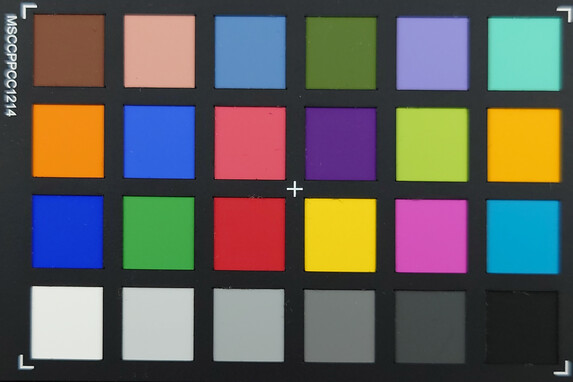
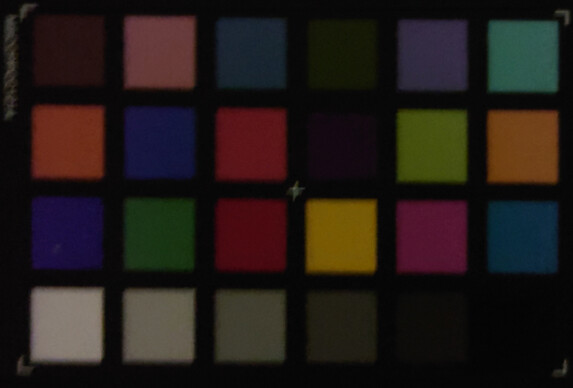
Accessories & Warranty - Wired headset in the box
Input Devices & Handling - Unreliable fingerprint scanner
The Xperia smartphone comes with Google’s Gboard, which offers a lot of customisation options. This is why it is well suited for a tall 21:9 screen. However, because of such a tall display, in portrait mode, the distance between the top button and the bottom button amounts to 15.8 cm (~6.2 in), and even the button in the middle is hard to reach. The smooth screen makes swiping across the display very easy.
The fingerprint sensor, which is integrated in the power button, did not function well in our review. The Sony smartphone does not support facial recognition.
Display - OLED screen with saturated colours
The 6.5-inch OLED display has a native resolution of 3840x1644 and a 21:9 aspect ratio. The Sony smartphone takes the bottom spot in our comparison chart when it comes to the screen brightness (560 cd/m²). The Xperia smartphone also takes a spot near the bottom of our comparison chart when it comes to the brightness distribution. However, a brightness distribution of 94% is still quite good. In the APL50 test, in which the screen displays a pattern of alternating black and white squares of equal size, we measured a brightness of 589 cd/m².
OLED panels typically use pulse width modulation (PWM) for brightness control. The OLED screen of the Sony smartphone flickers at a frequency of 240 Hz. This is why susceptible individuals may experience eye-strain when using the device.
| |||||||||||||||||||||||||
Brightness Distribution: 94 %
Center on Battery: 557 cd/m²
Contrast: ∞:1 (Black: 0 cd/m²)
ΔE ColorChecker Calman: 2.86 | ∀{0.5-29.43 Ø4.78}
ΔE Greyscale Calman: 5 | ∀{0.09-98 Ø5}
123.3% sRGB (Calman 2D)
Gamma: 2.171
CCT: 6993 K
| Sony Xperia 1 II OLED, 3840x1644, 6.5" | Xiaomi Mi 10 Pro Super AMOLED, 2340x1080, 6.7" | OnePlus 8 Pro AMOLED, 3168x1440, 6.8" | Huawei P40 Pro OLED, 2640x1200, 6.6" | Samsung Galaxy Note20 Ultra Dynamic AMOLED, 3088x1440, 6.9" | Apple iPhone 11 Pro Max OLED, 2688x1242, 6.5" | |
|---|---|---|---|---|---|---|
| Screen | 48% | 53% | 34% | 11% | 42% | |
| Brightness middle (cd/m²) | 557 | 753 35% | 796 43% | 584 5% | 860 54% | 790 42% |
| Brightness (cd/m²) | 561 | 762 36% | 779 39% | 576 3% | 878 57% | 790 41% |
| Brightness Distribution (%) | 94 | 96 2% | 94 0% | 95 1% | 96 2% | 97 3% |
| Black Level * (cd/m²) | ||||||
| Colorchecker dE 2000 * | 2.86 | 0.9 69% | 0.68 76% | 1.1 62% | 4.5 -57% | 1.4 51% |
| Colorchecker dE 2000 max. * | 7.29 | 1.6 78% | 1.55 79% | 2.3 68% | 10.4 -43% | 3.4 53% |
| Greyscale dE 2000 * | 5 | 1.5 70% | 1.1 78% | 1.8 64% | 2.4 52% | 1.9 62% |
| Gamma | 2.171 101% | 2.24 98% | 2.237 98% | 2.16 102% | 2 110% | 2.23 99% |
| CCT | 6993 93% | 6415 101% | 6310 103% | 6355 102% | 6466 101% | 6466 101% |
* ... smaller is better
Screen Flickering / PWM (Pulse-Width Modulation)
| Screen flickering / PWM detected | 240.4 Hz | ||
The display backlight flickers at 240.4 Hz (worst case, e.g., utilizing PWM) . The frequency of 240.4 Hz is relatively low, so sensitive users will likely notice flickering and experience eyestrain at the stated brightness setting and below. In comparison: 53 % of all tested devices do not use PWM to dim the display. If PWM was detected, an average of 8108 (minimum: 5 - maximum: 343500) Hz was measured. | |||
Like all OLED screens, the display of the Xperia smartphone offers an infinite contrast ratio and a black value of 0 cd/m². This is why the colours are easy to tell apart and the dark tones appear deep and saturated. You can adjust the colour reproduction in the settings menu or you can opt to use one of the preconfigured colour profiles instead. You can also use the device in Creator Mode,
which offers HDR and BT.2020 support.
Our CalMAN test reveals that the Delta E 2000 colour deviations are significantly lower in Creator Mode. However, the colour temperature is still a little elevated.
Display Response Times
| ↔ Response Time Black to White | ||
|---|---|---|
| 9 ms ... rise ↗ and fall ↘ combined | ↗ 5 ms rise | |
| ↘ 4 ms fall | ||
| The screen shows fast response rates in our tests and should be suited for gaming. In comparison, all tested devices range from 0.1 (minimum) to 240 (maximum) ms. » 24 % of all devices are better. This means that the measured response time is better than the average of all tested devices (20.2 ms). | ||
| ↔ Response Time 50% Grey to 80% Grey | ||
| 6 ms ... rise ↗ and fall ↘ combined | ↗ 3 ms rise | |
| ↘ 3 ms fall | ||
| The screen shows very fast response rates in our tests and should be very well suited for fast-paced gaming. In comparison, all tested devices range from 0.165 (minimum) to 636 (maximum) ms. » 17 % of all devices are better. This means that the measured response time is better than the average of all tested devices (31.6 ms). | ||
Outdoors, the display of the Xperia 1 smartphone leaves a very good impression, thanks to its good reflection handling. This is why the screen content is legible despite a relatively low screen brightness. However, the display can only be comfortably read in the shade.
Performance - Middling performance in the premium segment
The Sony smartphone features a Qualcomm Snapdragon 865 with an Adreno 650 GPU and 8 GB of RAM. The Xperia 1 II performs as expected in our benchmarks. When it comes to GPU and CPU performance, the Sony Xperia 1 II smartphone takes a spot in the middle of our comparison chart. Here, the Xiaomi Mi 10 Pro offers a slightly better level of performance, even though it has the same SoC.
In day-to-day use, the Sony smartphone feels very responsive. Applications launch very quickly and there are no stutters or freezes to speak of.
| PCMark for Android | |
| Work performance score (sort by value) | |
| Sony Xperia 1 II | |
| Xiaomi Mi 10 Pro | |
| OnePlus 8 Pro | |
| Huawei P40 Pro | |
| Samsung Galaxy Note20 Ultra | |
| Average Qualcomm Snapdragon 865 (10990 - 19989, n=22) | |
| Work 2.0 performance score (sort by value) | |
| Sony Xperia 1 II | |
| Xiaomi Mi 10 Pro | |
| OnePlus 8 Pro | |
| Huawei P40 Pro | |
| Samsung Galaxy Note20 Ultra | |
| Average Qualcomm Snapdragon 865 (9202 - 15299, n=23) | |
In the browser benchmarks, the Xperia smartphone does quite well. It takes second place in our comparison chart in Octane v2 and Kraken 1.1. In all other benchmarks, with the exception of WebXPRT 3, it takes third place. In day-to-day use, the scrolling is very smooth and webpages load very quickly.
| Jetstream 2 - 2.0 Total Score | |
| Average of class Smartphone (23.8 - 387, n=149, last 2 years) | |
| Apple iPhone 11 Pro Max (Safari Mobile 13.1) | |
| Huawei P40 Pro (Huawei Browser 10.1) | |
| Sony Xperia 1 II (Chrome 85) | |
| Xiaomi Mi 10 Pro (Chrome 81) | |
| Average Qualcomm Snapdragon 865 (45.2 - 77, n=20) | |
| OnePlus 8 Pro (Chrome 80) | |
| Samsung Galaxy Note20 Ultra (Chrome 84) | |
| JetStream 1.1 - Total Score | |
| Apple iPhone 11 Pro Max (Safari Mobile 13.1) | |
| Huawei P40 Pro (Huawei Browser 10.1) | |
| Sony Xperia 1 II (Chrome 85) | |
| Xiaomi Mi 10 Pro (Chrome 81) | |
| OnePlus 8 Pro (Chrome 80) | |
| Average Qualcomm Snapdragon 865 (74.2 - 145.1, n=21) | |
| Samsung Galaxy Note20 Ultra (Chrome 84) | |
| Speedometer 2.0 - Result 2.0 | |
| Average of class Smartphone (15.2 - 643, n=122, last 2 years) | |
| Apple iPhone 11 Pro Max (Safari Mobile 13.1) | |
| Huawei P40 Pro (Huawei Browser 10.1) | |
| Sony Xperia 1 II (Chrome 85) | |
| Xiaomi Mi 10 Pro (Chrome 81) | |
| OnePlus 8 Pro (Chome 80) | |
| Average Qualcomm Snapdragon 865 (30.6 - 74.5, n=19) | |
| WebXPRT 3 - Overall | |
| Apple iPhone 11 Pro Max (Safari Mobile 13.1) | |
| Average of class Smartphone (38 - 380, n=31, last 2 years) | |
| Average Qualcomm Snapdragon 865 (97 - 127, n=23) | |
| OnePlus 8 Pro (Chrome 80) | |
| Samsung Galaxy Note20 Ultra (Chrome 84) | |
| Xiaomi Mi 10 Pro (Chrome 81) | |
| Sony Xperia 1 II (Chrome 85) | |
| Huawei P40 Pro | |
| Octane V2 - Total Score | |
| Apple iPhone 11 Pro Max (Safari Mobile 13.1) | |
| Average of class Smartphone (2228 - 121337, n=197, last 2 years) | |
| Sony Xperia 1 II (Chrome 85) | |
| Huawei P40 Pro (Huawei Browser 10.1) | |
| OnePlus 8 Pro (Chrome 80) | |
| Xiaomi Mi 10 Pro (Chrome 81) | |
| Average Qualcomm Snapdragon 865 (14606 - 31224, n=23) | |
| Samsung Galaxy Note20 Ultra (Chrome 84) | |
| Mozilla Kraken 1.1 - Total | |
| Samsung Galaxy Note20 Ultra (Chrome 84) | |
| Sony Xperia 1 II (Chrome 85) | |
| Average Qualcomm Snapdragon 865 (1623 - 2911, n=24) | |
| Xiaomi Mi 10 Pro (Chrome 81) | |
| OnePlus 8 Pro (Chrome 80) | |
| Huawei P40 Pro (Huawei Browser 10.1) | |
| Average of class Smartphone (257 - 28190, n=154, last 2 years) | |
| Apple iPhone 11 Pro Max (Safari Mobile 13.1) | |
* ... smaller is better
Sony’s smartphone features 256 GB of UFS 3.0 memory. However, only 236 GB is available to the user. In the storage benchmarks, the Xperia 1 II performs slightly worse than comparable devices with UFS 3.0 memory.
The storage capacity can be expanded by up to 1 TB with the help of a microSD card. With our reference-grade microSD card Toshiba Exceria Pro M501, the Sony smartphone only manages to achieve slow write and read speeds, which is why it falls behind the competition.
| Sony Xperia 1 II | Xiaomi Mi 10 Pro | OnePlus 8 Pro | Huawei P40 Pro | Samsung Galaxy Note20 Ultra | Average 256 GB UFS 3.0 Flash | Average of class Smartphone | |
|---|---|---|---|---|---|---|---|
| AndroBench 3-5 | 45% | 27% | 57% | 51% | 43% | 138% | |
| Sequential Read 256KB (MB/s) | 1512 | 1739 15% | 1627 8% | 1775 17% | 1782 18% | 1547 ? 2% | 2228 ? 47% |
| Sequential Write 256KB (MB/s) | 396.4 | 750 89% | 730 84% | 395.7 0% | 802 102% | 575 ? 45% | 1852 ? 367% |
| Random Read 4KB (MB/s) | 196.4 | 264.9 35% | 208.3 6% | 228.1 16% | 186.7 -5% | 210 ? 7% | 296 ? 51% |
| Random Write 4KB (MB/s) | 181.5 | 258.5 42% | 197.7 9% | 271.8 50% | 217.7 20% | 188.5 ? 4% | 339 ? 87% |
| Sequential Read 256KB SDCard (MB/s) | 34.7 ? | 82.3 ? 137% | 65.6 ? 89% | 70.6 ? 103% | |||
| Sequential Write 256KB SDCard (MB/s) | 30.7 ? | 68.1 ? 122% | 55.6 ? 81% | 59.8 ? 95% |
Gaming - High-frame gaming is possible
The Qualcomm Adreno 650 can run all current titles on high settings. The Xperia smartphone manages to achieve a mostly stable 60 FPS in the games, which we benchmarked using Gamebench. In our testing, the frame rates always stayed above 50 FPS, which is why users can expect a very smooth gameplay experience.
Because the touchscreen offers a very smooth surface, moving fingers around it is very easy, which is good news for gamers. The motion sensor works well in tittles, in which it is used.
Emissions - Stereo speakers provide a good sound quality
Temperature
The smartphone gets quite warm under load. However, it never feels hot. The surface temperatures of the Sony Xperia 1 II reach 44.8 °C (112.64 °F) under load. Sony’s smartphone manages to maintain its full performance in the Manhattan section of the GFXBench benchmark. This means that it should not throttle under continuous load.
(±) The maximum temperature on the upper side is 44.8 °C / 113 F, compared to the average of 35.2 °C / 95 F, ranging from 21.9 to 247 °C for the class Smartphone.
(±) The bottom heats up to a maximum of 43.6 °C / 110 F, compared to the average of 34 °C / 93 F
(±) In idle usage, the average temperature for the upper side is 33.9 °C / 93 F, compared to the device average of 32.9 °C / 91 F.
Speakers
The two speakers of the Xperia smartphone offer a mediocre volume and a relatively wide sound stage. The lows are underrepresented, though. In quiet environments, the Xperia 1 II can be occasionally used for media content consumption. Sony’s smartphone features technologies which can enhance the sound quality of external speakers or headphones. It supports Dolby Atmos, DSEE Ultimate and aptX HD.
Sony Xperia 1 II audio analysis
(±) | speaker loudness is average but good (78.3 dB)
Bass 100 - 315 Hz
(-) | nearly no bass - on average 27.7% lower than median
(±) | linearity of bass is average (11.5% delta to prev. frequency)
Mids 400 - 2000 Hz
(+) | balanced mids - only 2.5% away from median
(±) | linearity of mids is average (7.2% delta to prev. frequency)
Highs 2 - 16 kHz
(+) | balanced highs - only 2% away from median
(+) | highs are linear (3.8% delta to prev. frequency)
Overall 100 - 16.000 Hz
(±) | linearity of overall sound is average (21.8% difference to median)
Compared to same class
» 44% of all tested devices in this class were better, 8% similar, 48% worse
» The best had a delta of 11%, average was 35%, worst was 134%
Compared to all devices tested
» 61% of all tested devices were better, 7% similar, 32% worse
» The best had a delta of 4%, average was 24%, worst was 134%
Apple iPhone 11 Pro Max audio analysis
(+) | speakers can play relatively loud (85.8 dB)
Bass 100 - 315 Hz
(-) | nearly no bass - on average 15.4% lower than median
(±) | linearity of bass is average (10.3% delta to prev. frequency)
Mids 400 - 2000 Hz
(±) | higher mids - on average 5.7% higher than median
(+) | mids are linear (5.9% delta to prev. frequency)
Highs 2 - 16 kHz
(±) | higher highs - on average 8.8% higher than median
(+) | highs are linear (3.5% delta to prev. frequency)
Overall 100 - 16.000 Hz
(±) | linearity of overall sound is average (19.4% difference to median)
Compared to same class
» 27% of all tested devices in this class were better, 8% similar, 65% worse
» The best had a delta of 11%, average was 35%, worst was 134%
Compared to all devices tested
» 47% of all tested devices were better, 7% similar, 46% worse
» The best had a delta of 4%, average was 24%, worst was 134%
Battery Life - Poor battery runtimes in the Wi-Fi test
Energy Consumption
The Xperia 1 II is a little less energy-efficient than the competition. When idle, the Xperia smartphone has an average power draw of 2.3 watts. Under load, the power consumption averages 7.2 watts. Sony’s smartphone has the highest peak power draw (10.6 watts) amongst devices featured in this review.
The included 18-watt USB-C power adapter should have no trouble supplying the Sony Xperia 1 II with enough energy.
| Off / Standby | |
| Idle | |
| Load |
|
Key:
min: | |
| Sony Xperia 1 II 4000 mAh | Xiaomi Mi 10 Pro 4500 mAh | OnePlus 8 Pro 4510 mAh | Huawei P40 Pro 4200 mAh | Samsung Galaxy Note20 Ultra 4500 mAh | Apple iPhone 11 Pro Max 3969 mAh | Average Qualcomm Snapdragon 865 | Average of class Smartphone | |
|---|---|---|---|---|---|---|---|---|
| Power Consumption | 46% | -12% | 45% | 40% | 22% | 18% | 25% | |
| Idle Minimum * (Watt) | 1.7 | 0.61 64% | 2.2 -29% | 0.92 46% | 0.65 62% | 0.92 46% | 1.133 ? 33% | 0.842 ? 50% |
| Idle Average * (Watt) | 2.3 | 1.19 48% | 3.3 -43% | 1.41 39% | 1.06 54% | 2.9 -26% | 2.23 ? 3% | 1.439 ? 37% |
| Idle Maximum * (Watt) | 2.9 | 1.23 58% | 3.7 -28% | 1.47 49% | 1.49 49% | 2.94 -1% | 2.45 ? 16% | 1.624 ? 44% |
| Load Average * (Watt) | 7.2 | 4.18 42% | 5.9 18% | 3.35 53% | 4.91 32% | 3.65 49% | 5.26 ? 27% | 7.03 ? 2% |
| Load Maximum * (Watt) | 10.6 | 8.53 20% | 8.3 22% | 6.37 40% | 10.29 3% | 6.18 42% | 9.68 ? 9% | 11.3 ? -7% |
* ... smaller is better
Battery Life
In our practically oriented Wi-Fi test, the Xperia smartphone, which has a 4000-mAh battery, achieves a battery runtime of less than 8 hours. Here, all other competing devices last longer, even though their batteries are not significantly larger.
The included fast charger takes about 2 hours to fully charge the device. The Sony smartphone also supports QI wireless charging.
| Sony Xperia 1 II 4000 mAh | Xiaomi Mi 10 Pro 4500 mAh | OnePlus 8 Pro 4510 mAh | Huawei P40 Pro 4200 mAh | Samsung Galaxy Note20 Ultra 4500 mAh | Apple iPhone 11 Pro Max 3969 mAh | |
|---|---|---|---|---|---|---|
| Battery runtime | 44% | 60% | 30% | 32% | 94% | |
| Reader / Idle (h) | 21.6 | 35.6 65% | 35.1 63% | 24.6 14% | 20.4 -6% | 43.6 102% |
| H.264 (h) | 13 | 16.2 25% | 17.1 32% | 19 46% | 16.6 28% | 22.4 72% |
| WiFi v1.3 (h) | 7.8 | 14.4 85% | 15.4 97% | 12.4 59% | 10.7 37% | 15.2 95% |
| Load (h) | 3.3 | 3.3 0% | 4.9 48% | 3.3 0% | 5.6 70% | 6.8 106% |
Pros
Cons
Verdict- True camera smartphone
Sony sticks to its usual 21:9 aspect ratio with the Xperia 1 II. This is not a negative, and the smartphone brings enough value to the table for a premium device. The camera hardware is only utilised to its full potential when used with Sony’s professional software. Normal users can still use the standard camera application, which offers fewer features. The rest of the hardware is similar to what other devices in this price range offer. However, competing smartphones manage to squeeze more performance out of identical hardware.
The Sony Xperia 1 II is well suited for professional photographers, who are going to get a lot of value out of the included professional camera applications. For everyone else, the Sony smartphone is just priced too high.
The short battery life is especially disappointing. Yes, the display is big and needs a lot of energy. However, competing smartphones with smaller batteries offer longer battery runtimes. The SD card reader offers a very poor level of performance. And the internal memory is not that fast, either. Those who are going to make good use of the professional camera applications are going to be satisfied with their purchase, as long as they do not use a microSD card to store images.
Sony Xperia 1 II
- 08/31/2022 v7 (old)
Mike Wobker




